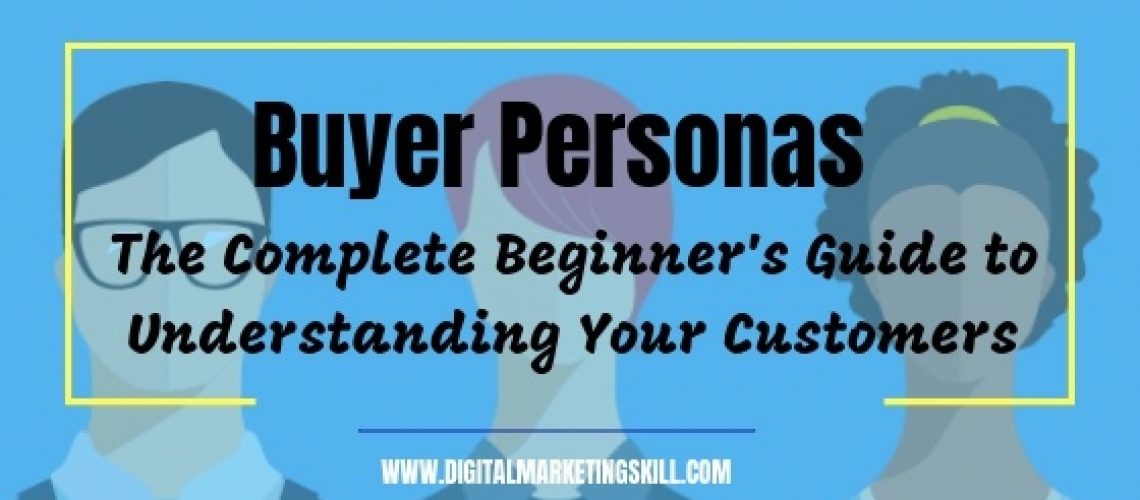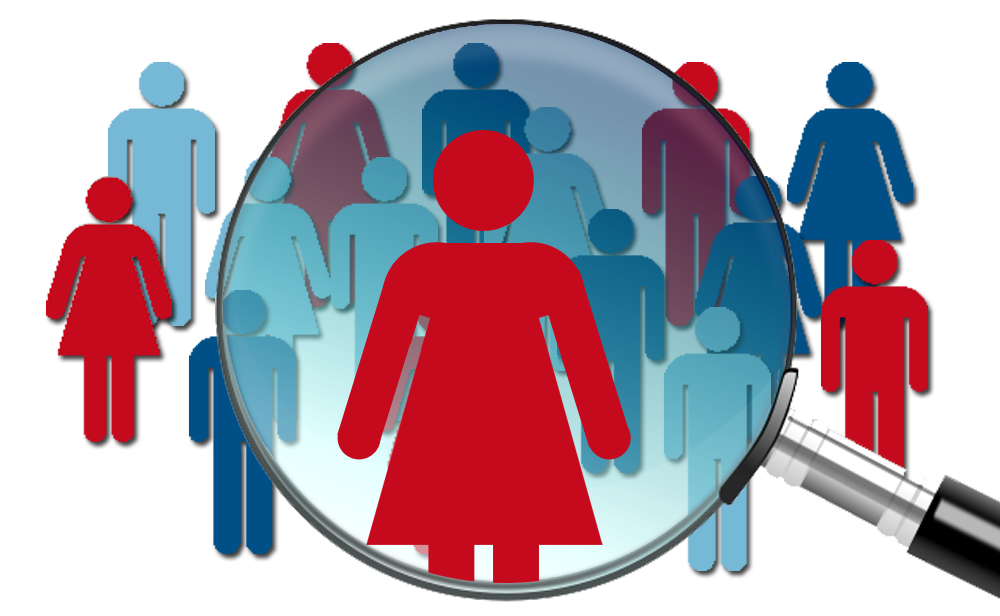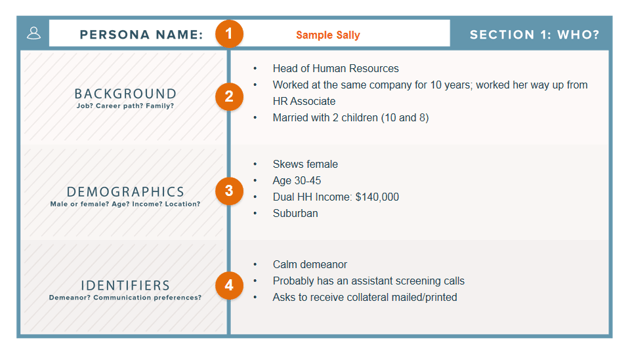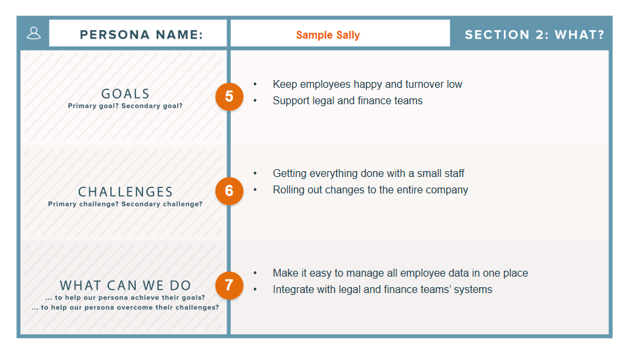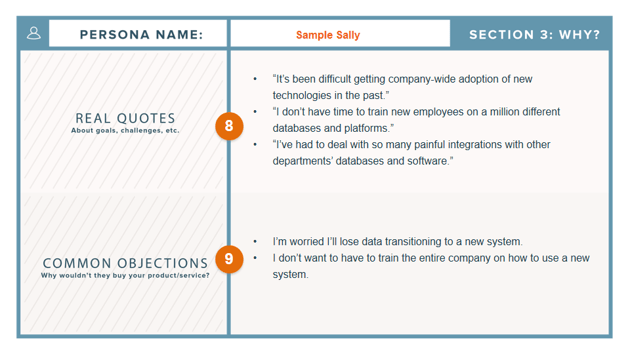Have you ever yelled over and over again to a marketing lead and found yourself wasting words on deaf ears?
It’s almost as bad as wasting precious revenue on marketing strategies with low ROI.
But what catches a buyer’s attention in an overwhelmingly ad-heavy world? There’s no arguing with the fact that today’s businesses have to break through an impressive amount of noise in order to capture a prospective buyer’s attention.
In fact, some experts estimate that we’re exposed to as many as 4,000-10,000 marketing messages a day, making it harder than ever to get your sales pitch into the eyes and ears of the right people.
So how do we determine which of these messages to acknowledge and trust?
It all boils down to creating a well-profiled buyer persona, or customer avatar, as we like to call it in our digital marketing training. For us, we believe in personalized marketing, which has proven to increase conversion rates by up to 93% according to a report by Econsultancy.
This is why, one of the first things that you’ll learn when you register for the training is to learn how to design a perfectly profiled customer avatar that not only characterizes your ideal buyer’s persona and behaviours but also goes further to show you what messages to promote to who, why, when and where.
Click here to learn more about the training.
Done that? Great…Now, let’s get you in on what a buyer persona is and how to get started.
Ready? Let’s go!
Get 50% Discount to Master ALL Aspects of Digital Marketing That Can Earn You $2,500 - $5,000 a month (Even if you are a complete beginner!)
Our students that intentionally implement what they learn from our digital marketing course make back the entire course fee within a single month or more after completing our course because our course gives them many income generating options with unlimited earning potential with no age or location barrier. The best part is no technical skills are required.
An opportunity to change your lifestyle and make money working from anywhere in the world. The results our students get from our digital marketing course prove this could be applied to any market or country and that it is designed for any skill level and work background.
*By signing up, you agree to our privacy policy and terms of service.
Buyer personas (sometimes referred to as marketing personas) are fictional, generalized representations of your ideal customers. Personas help us all, in marketing, sales, products, and services, internalize the ideal customer we’re trying to attract and relate to our customers as real humans.
Having a deep understanding of your buyer persona(s) is critical to driving content creation, product development, sales follow-up, and really anything that relates to customer acquisition and retention.
“Okay, so personas are really important to my business. But… how do I actually make one?”
Ahaaa! The million-dollar question.
The good news is, they aren’t that difficult to create.
You just need to ask the right questions to the right people and helpfully present that information so the people in your business can get to know your persona(s) better than the backs of their hands.
Before we dive into the buyer persona-creation process, let’s pause to understand what a buyer persona is and the impact having well-developed buyer personas can have on your business, and specifically your marketing.
What is a Buyer Persona?
Simply put, a buyer persona is a detailed description of your target customer. A fully fleshed out buyer persona includes everything from demographic information to hobbies, and from career history to family size–all written as if the persona were a real person.
A buyer persona is a fictional person that fits centrally into one of your target audiences because they share the most common characteristics of your customers.
But they are not just a pile of demographic information like age and income level.
A marketing persona is more like a character in a book. They have passions, strengths, and flaws.
Here is an example of what a marketing persona looks like:

The advantage of creating these personas is that clearly defining your target customer (or customers) allows you to better tailor your marketing messages to the people whom you want to buy your products or services.
Moving on, here’s what you need to know.
Customer Avatars (well, Buyer Personas) are not the same as a target market
One of the first steps to starting a business involves identifying your target market.
This should be done before you officially launch to make sure people will be interested in your brand, products, or services.
But target markets are not the same thing as your customer personas although they will have some similarities. This is a logical place to start, especially if you’re a new business. Even if your company has been operating for quite some time, it doesn’t hurt to go back to the drawing board.
Re-evaluate your target market if you’re struggling with conversions.
You need to have a firm grasp of this topic before you can develop a customer persona. The basics are good, but for advanced and expert leverage of this marketing goldmine, you need to register to attend our digital marketing training starting soon.
Demographics are a key component of your target market.
I’m talking about factors like:
- Geographic location
- Age
- Sex
- Religion
- Marital status
- Income
All of these play a role in determining your company’s target audience. But your customer persona is going to break that down even further.
While your target audience encompasses the elements that show what different groups of people have in common, the customer persona looks for differentiating factors.
What makes each person within a certain demographic unique?
Just because two people of the same gender and same age live in a specific city doesn’t mean they have similar interests.
One may be the perfect customer for your company, while the other would be a waste of time and money to focus your marketing efforts on.
Why Exactly Are Buyer Personas So Important to Your Business?
Buyer personas help you understand your customers (and prospective customers) better. This makes it easier for you to tailor your content, messaging, product development, and services to the specific needs, behaviors, and concerns of different groups.
In other words, you may know your target buyers are care-givers, but do you know what their specific needs and interests are? What is the typical background of your ideal buyer?
In order to get a full understanding of what makes your best customers tick, it’s critical to develop detailed personas for your business, thet same way our digital marketing students do practically in class.
The strongest buyer personas are based on market research as well as insights you gather from your actual customer base (through surveys, interviews, etc.).
[bctt tweet=”Depending on your business, you could have as few as one or two personas, or as many as 10 or 20. But if you’re new to personas, start small! You can always develop more personas later if needed.” username=”dmsinstitute”]
What About “Negative” Personas?
Whereas a buyer persona is a representation of your ideal customer, a negative, or “exclusionary”, persona is a representation of who you don’t want as a customer.
For example, this could include professionals who are too advanced for your product or service, students who are only engaging with your content for research/knowledge, or potential customers who are just too expensive to acquire (because of a low average sale price, their propensity to churn, or their unlikeliness to purchase again from your company).
How Can Buyer Personas Be Used in Marketing?
At the most basic level, developing customer avatars allows you to create content and messaging that appeals to your target audience. It also enables you to target or personalize your marketing for different segments of your audience.
For example, instead of sending the same lead nurturing emails to everyone in your email list, you can segment by buyer persona and tailor your messaging according to what you know about those different personas.
Furthermore, when combined with lifecycle stage (i.e. how far along someone is in your sales cycle), buyer personas also allow you to map out and create highly targeted content.
And if you take the time to also create negative personas, you’ll have the added advantage of being able to segment out the “bad apples” from the rest of your contacts, which can help you achieve a lower cost-per-lead and cost-per-customer, and see higher sales productivity.
Now, are you ready to start creating your buyer personas?
1#: Market-research to Know Your Customer (KYC)
When creating a buyer persona, you’re essentially creating a personality that embodies a key segment of your audience -and the first step to accomplishing this is to conduct thorough research.
To get a gauge on who your customers are, what they want, and what they’re looking for you to solve you will need to hold surveys and polls via your social media channels; interview current customers on one-to-one basis, and look at your competitors to see how their customers interact with them online; this will help you gain a better understanding of who you’re speaking to on your channels.
Services like SurveyMonkey are very useful as they offer suggestions on how to phrase certain questions for your various demographics to ensure that you get the most valuable response to inform your buyer persona campaign.
2#: Check your site analytics
More data has been created in the last two years than in the whole previous history of the human race.
That’s a lot of data. You can harness this data to strategically focus your marketing efforts and reach out to your customers in a valuable way.
Inside your site analytics, you’ll be able to see where your site visitors came from, the keywords they used to find you, and how long they stayed on site once they arrived.
This type of data is essential to creating buyer personas as it shows the search terms that led your audience to your site, as well as the devices and platforms they used to get there.
3#: Make a buyer persona template
Now you’ve checked your analytics, gathered your data and gained key insights on your customer base; you’ll be ready to create a buyer persona template.
You can skip this step and register for our digital marketing training, where you can use our ready-made buyer persona template. The template is designed to perfectly profile your potential customer and help you save time and resources in designing from scratch.
You can click here to join the class
Here is an overview of what to include in your buyer persona template:
Persona name: It’s very important to give your persona a name to bring them to life and humanize your marketing efforts.
Job title:
- Essential information about their company (size, sector, etc.)
- Details about their job role
Demographics:
- Age
- Gender
- Salary or combined household income
- Location: are they from an urban, suburban or rural region
- Level of education
- Family size
Goals and challenges:
- Main goal
- Secondary goal
- How you help your persona reach these goals
- Primary challenge
- Secondary challenge
- How you can assist in resolving these problems
Values and fears:
- Main personal values
- Common objections during the sales process
Marketing message:
Think about how you might describe or communicate your product or services to this particular type of person?
Elevator pitch:
Elaborate on your marketing message and decide on a consistent message based on how you’re going to sell yourself to this customer.
Here is an example of a basic buyer persona.
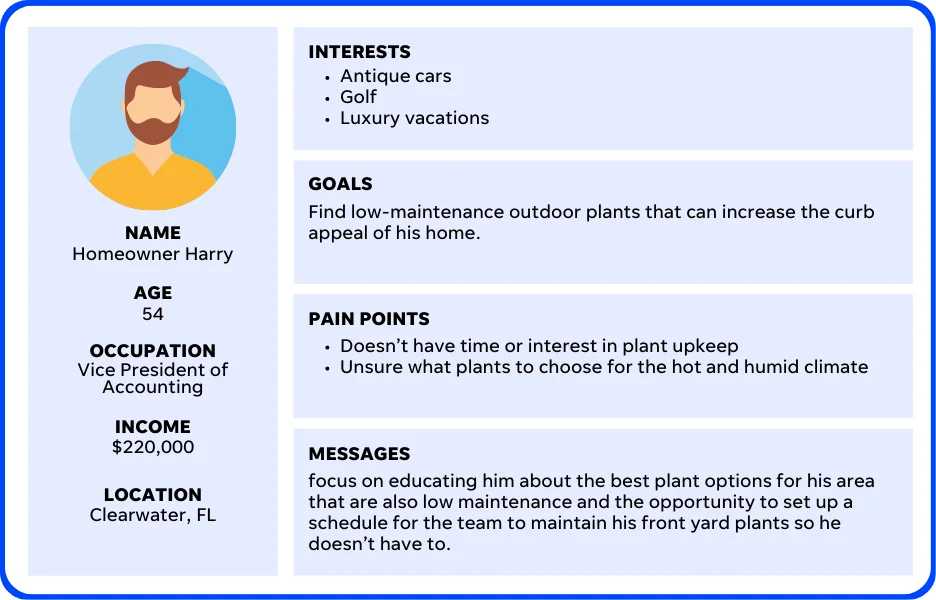
How to Use Your Research to Create Your Persona
Once you’ve gone through the research process, you’ll have a lot of meaty, raw data about your potential and current customers. But what do you do with it? How do you distil all of that so it’s easy for everyone to understand all the information you’ve gathered
The next step is to use your research to identify patterns and commonalities from the answers to your interview questions, develop at least one primary persona, and share that persona with the rest of the company.
You can do this by using our customer avatar (well, buyer persona) templates that you get when you register for our digital marketing training. The template is designed to perfectly profile your potential customer and help you save time and resources in designing from scratch.
After creating the personas using our templates, you can then share these slides with the rest of your company so everyone can benefit from the research you’ve done and develop an in-depth understanding of the person (or people) they’re targeting every day at work.
You can click here to join the class and secure a limited seat.
Here’s how to use the template to do it …
Fill in Your Persona’s Basic Demographic Information
If you don’t feel comfortable asking some of these demographic-based questions on the phone or in person, you can also conduct online surveys to gather this information.
Some people are more comfortable disclosing things like this through a survey rather than verbal communication.
It’s also helpful to include some descriptive buzzwords and mannerisms of your persona that you may have picked up on during your conversations to make it easier for people in your sales department to identify certain personas when they’re talking to prospects.
Here’s an example:
Share What You’ve Learned About Your Persona’s Motivations
This is where you’ll distill the information you learned from asking “Why” so much during those interviews. What keeps your persona up at night?
Who do they want to be? Most importantly, tie that all together by telling people how your company can help them.
Help Your Sales Team Prepare for Conversations With Your Persona
Include some real quotes from your interviews that exemplify what your personas are concerned about, who they are, and what they want.
Then create a list of the objections they might raise so your sales team is prepared to address those during their conversations with prospects.
Help Craft Messaging for Your Persona
Tell people how to talk about your products/services with your persona. This includes the nitty gritty vernacular you should use, as well as a more general elevator pitch that positions your solution in a way that resonates with your persona.
This will help you ensure everyone in your company is speaking the same language when they’re having conversations with leads and customers.
Let’s wrap it up
Think of creating customer personas as an upside-down pyramid. You start off with the broadest possible information for one demographic segment.
As you shave away possibilities, you fill in details like job title, income, and where they live.
Their interests help to refine your persona even further.
You can begin to target your personas in a relevant way.
Plus, you can accurately estimate how they spend their money.
Once you’ve understood that, you can enter into their psyche to see what motivates them to spend.
When you understand their content consumption, you can figure out the best places to reach them.
The bottom line is that using personas can unlock some of the most difficult answers to marketing.
All of these and more are part of what you get when you attend our digital marketing training. Plus, you also enjoy 1-year support to help you get a perfect hang of these actions and redirect you whenever you derail from the process.

